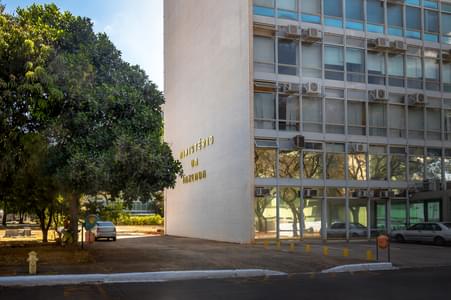In general, analysts and academics continue pressing the same keys, with a serious division in economic policy recommendations. With the exit of Palocci from the Finance Ministry in 2006, the group that advocated cutting the interest rate at any cost, intervention in the foreign exchange market and fiscal laxity, instead of strengthening the economic “tripod”, started to define the country’s economic policy. These were the times of the “New Macroeconomic Matrix”, an expression coined by the then secretary for economic policy, Márcio Holland.
Ironically, the Rousseff administration’s disastrous economic policy helped the country progress and reject experimentalism in this area. In the future, amidst a stable macroeconomic environment, with the gross public debt under control and closer to that of peer countries (according to the IMF, Brazil’s gross debt is 73% of GDP, versus 17% for Chile, 50% for Colombia, 54% for Mexico, and 23% for Peru), as well as with inflation under control (Chile, Colombia and Mexico have targets of 3%, while Peru’s is 2%), there will be room for countercyclical fiscal policy, and possibly revision of the inflation targeting regime. After so many economic policy mistakes, there is hope for optimism.
The economic debate is advancing, and the need to build a pro-growth microeconomic agenda is coming to the fore. In reality, this began during Lula’s first term, but abandoned thereafter. The mistakes of the sectorial policies of Dilma Rousseff also raised the pressure on the productive sector, which was neglected and is now anxious for horizontal measures and cost reduction.
The microeconomic agenda is technically complex. Unlike the macro agenda, it is not consolidated in economic literature, so it is necessary to evaluate each proposal on a case-by-case basis. This has not been a common theme in academic research in Brazil. So, we don’t know very well how to formulate pro-growth microeconomic policies for the long term.
This not only involves removing obstacles to growth, such as the complex (and largely cumulative) tax structure, stifling bureaucracy, legal insecurity and excessive governmental regulation of markets, including the labour market. It also means eliminating polices that protect inefficiency, such as the national content rule, the Simples tax regime, protection of the automotive industry, the Manaus Free Trade Zone, and foreign trade barriers. Political challenges abound because each sectorial policy has an interest group lobbying against these microeconomic reforms.
Analysis Brazil’s position in the competitiveness rankings offers some sense of where the country is most fragile. In the Global Competitiveness Index, Brazil, embarrassingly, occupies the 81st position (Chile is 33rd, Colombia 61st, Mexico 51st and Peru 67th) in a total of 138 countries, and is penalised by factors like government regulation, taxation of investments and labor market inflexibility. More recently, corruption has entered the list of leading ailments.
Where Brazil stands out positively is market size (it currently ranks 8th), but this is a gift of circumstances, not conquest. If Brazil’s ranking in this respect was the average of the other factors, the country would be in 96th place, closer to countries like Kenya, Tunisia and Bhutan.
Another point worth noting is that 60% of the items considered for the country have lower than average scores. In other words, the country is poorly ranked due to many defects, rather than a few very severe defects.
These data give a notion of the necessary amplitude of the microeconomic agenda. There are many priorities, since Brazil has very low scores on many items. With a difficult business environment and protection of inefficiencies, there is little incentive for companies to invest in the search for productivity gains.
This is perhaps the reason that, according to Marcos Lisboa and José Alexandre Scheinkman in article in the “Ilustríssima” section of Folha de S.Paulo newspaper, “we are poor not because we specialize in less productive activities, but instead because we are less efficient in the majority of sectors.” It is important to note that the low productivity gains in Brazil in recent years are largely explained by the inefficiency at the level of sectors and companies.
The government and Central Bank have announced a set of measures to reduce bureaucracy in various segments. These are measures that will move us in the right direction, and a good start.
The microeconomic agenda, however, cannot be achieved in packages. It requires a permanent agenda of improvement in the business climate, including greater legal security about labor and tax matters, reduction of restrictions on foreign trade, strengthening and better definition of the scope of regulatory agencies and other various measures.
It is crucial to establish an ample microeconomic agenda and a long-range action plan. Vast and wide-reaching, it will would be important to strengthen the confidence of economic agents, and offer a positive legacy to future governments.









